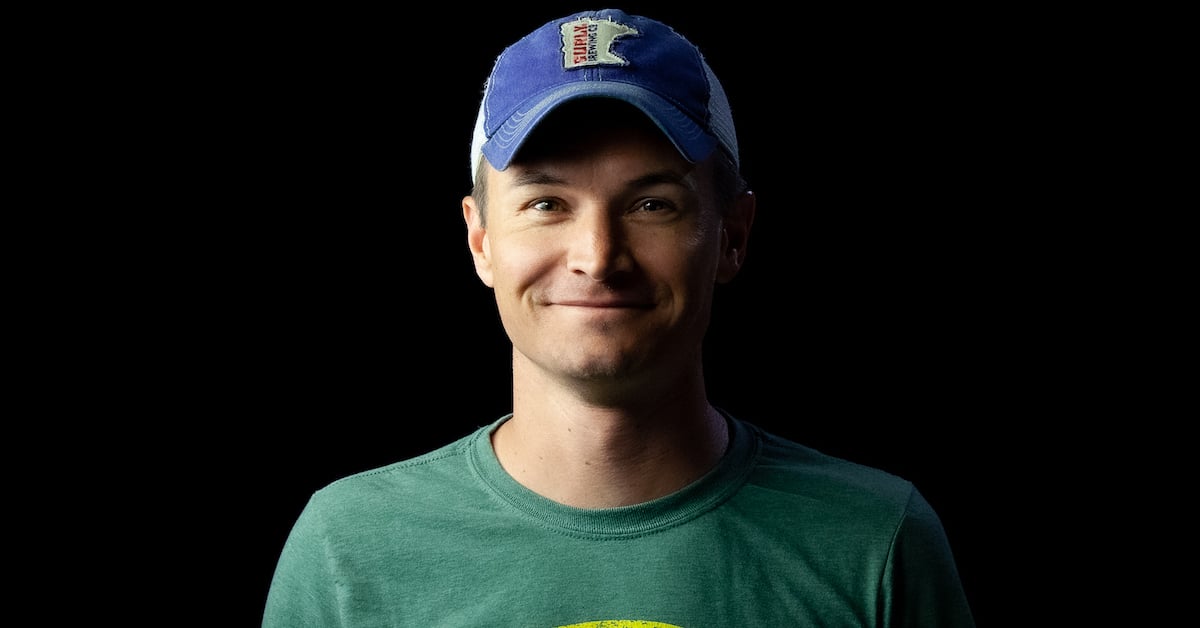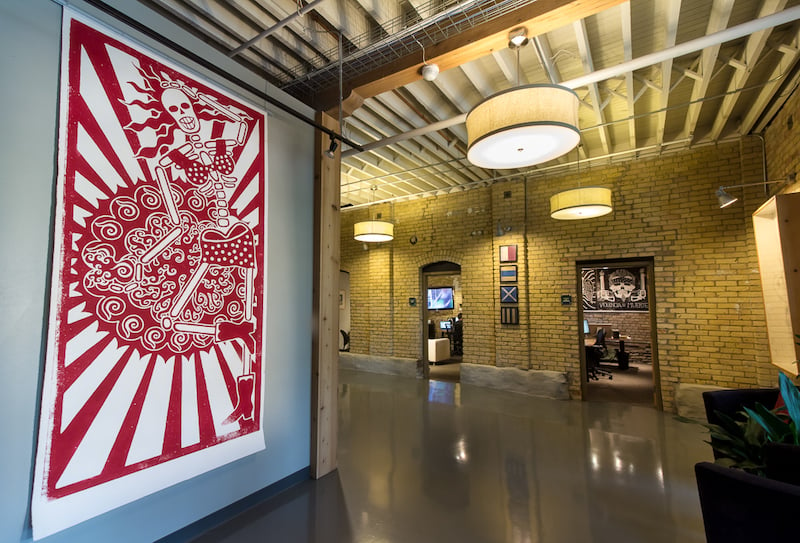HDMG’s Ben O’Brien on serving the story and creating an immersive viewing experience with sound.
In visual media, while the audio track is an essential part of a fully immersive experience, it’s often the last thing directors and producers think about when it comes to planning and budgeting. Post-production is a fast-paced industry where countless hours of meticulous effort often go into crafting the perfect few seconds, minutes, or hours of a finished product.
Ben O’Brien, lead audio designer/specialist at post-production super house HDMG in Minneapolis has seen just about every type of project come his way – television series, documentary films, corporate video, music videos, and the soundtracks for exhibits, kiosks and other multimedia installations. Each project presents different sonic challenges – sound design, spectral editing, audio forensics, creative mixing, etc. – but the mission remains the same: serve the story and create a fully immersive experience for the viewer.
Ensure your team has the tools needed to deliver your best sound on every project, faster and more creatively than ever.

Pro Sound Effects caught up with Ben to discuss the creative process, plus some of the common audio challenges he faces and the tricks and techniques he uses to overcome them. The tips he provides are applicable to anyone with a chair in the studio, beginners to seasoned pros, from audio specialists to video editors who wear multiple post-production hats.
HDMG clients range from Netflix, Amazon Studios and Nickelodeon to Best Buy, 3M and Toro, plus agencies of all sizes - so the projects Ben works on vary by the hour. “Off the bat, about 60 to 70% of the work I originally worked on were corporate, the occasional film and documentary came through, plus radio projects, and audio cues like work voice prompts for phone systems.” This makes him essentially a short order cook for sound, where any given day may see him working on a national TV commercial, JumboTron video to support a major keynote, corporate training videos, or a new TV series or feature film.
"It’s not enough to deliver clean and coherent dialogue, the editor must also factor in how close the audience is to the action (via the camera) and what’s happening off screen that the audience must hear (with or without seeing it)."

HDMG Studio
For most productions, by the time a project reaches Ben’s desk, the picture has been locked (we’re not here to argue whether or not picture-lock still exists in the 2020s), and it’s his job – depending on available time and budget – to create an audio mix that both complements and elevates the visual experience. The foundation of a good mix includes proper leveling of dialogue, music, and sound effects so that what appears on screen aligns to what the audience is supposed to hear. It’s not enough to deliver clean and coherent dialogue, the editor must also factor in how close the audience is to the action (via the camera) and what’s happening off screen that the audience must hear (with or without seeing it). “What emotions take place on screen? What emotions does the director want the audience to feel at any particular moment?” Ben said. “A character might appear to be relaxed on screen, but with the right audio mix, the audience might be on the edge of their seats because something big is about to happen.”
This is where sound effects come into play; the source files for which vary by director and by project. Some directors deliver desired sound effects to the sound editor; they may have been created by the A or B production unit to specific directions. In some cases, the sound team will record or create their sounds for a project, but more often than not, pre-recorded source material - ie. a professional sound library like CORE from Pro Sound Effects - is simply a necessity. For example, Foley is fairly doable on spec, but complicated and/or exotic items like vehicles, animals, and firearms prohibitively costly to record to order. And according to Ben, even with the highest quality sound library in tow, each use of a sound effect calls for a delicate approach – sometimes it makes sense to plant an effect into the mix as is, other times, multiple source files must be combined as the building blocks to create the desired sound.
"Texture creates the life around us. Beyond the explosion in the movie is the tail of the explosion that rumbles through the room before trailing off. Anybody can make a loud banging sound, but we’re creating the full environment for the track, the click before the bang, panicked voices and scrambling footsteps, the motorcycle speeding away, and silence between those things.”

HDMG Facilities
It takes a well-trained ear to create fully immersive sound designs that authentically support the desired visual. “Texture creates the life around us,” Ben says. “Beyond the explosion in the movie is the tail of the explosion that rumbles through the room before trailing off. Anybody can make a loud banging sound, but we’re creating the full environment for the track, the click before the bang, panicked voices and scrambling footsteps, the motorcycle speeding away, and silence between those things.”
“We’re trying to help the director guide the audience on how to feel at any given moment. The authenticity, texture and intimacy of what we see and hear truly engages our emotional response,” said Ben. “To deliver this in the mix using a sound effects library, sometimes you have to shift your mindset to think in a different way -- because a lot of times you don't necessarily want to look for the actual sound. To elevate or evolve your work, which I hope is something we are all constantly striving to do, think of yourself as a chef creating a dish, versus a consumer reheating one. I suggest using libraries as a pantry of ingredients to cook with, as opposed to pulling the entire TV dinner out of the freezer, popping it into the microwave and going, ‘there's your dinner’ because I typed in ‘dinner’ into the sound effects search tool.”
“Sound mix decisions are highly contextual, varying on the scene and the film,” Ben says. “Imagine adding a car door sound into a scene where the character opens or closes one. Sometimes, maybe the car door is not really that important; it needs a proper, aligning sound but it may not be that loud. What if the actor, let's say, is or isn't angry? Is the door going to be loud? What's the perspective? Are we (the audience) close or not? What kind of car is it – a fancy sports car or a beater? Do we want to use that car door as a metaphor for his life? When he closes it, does the whole car rattle because the chassis is a little janky? There's so much it could say -- or maybe it doesn't need to say anything and we really want to pay attention to the fact that glass just broke in the alley around the corner because that's where he's going and we should be worried for him.”
Sound effects libraries have come a long way from the days when they were packed onto carts filled with binders of CD-ROMs and phone-book size printed indexes. Back then, you would thumb through pages to find a potential effect, find the corresponding CD-ROM, load it, transfer the file, and if the sound did not fit, start again. Now, hundreds of thousands of pristine, very specific audio files are a click away -- if you know how to search correctly and align your brain with the metadata.
“Some people are really search oriented and they come up with great search strings – but I'm not one of them,” said Ben. “If I don't know what a sound is called, I ask myself, ‘how would the people who created this library describe that because they're the ones who control the metadata?’ I’ll ask myself, ‘what else in my life sounds like that even if it's not that?’”
“There's a great story about this guy in Minneapolis, who back in the 90s, was working on a show where the submarine door hatch closes -- but they didn't have a sound effect for it. He said, ‘I have a candy tin right here.’ So, he takes the candy tin, he holds it up to the talkback mic, records it, messes with it, lowers the pitch, does all this stuff to it, and the client says, ‘Yeah, all right.’ Candy tin plus some creative manipulation equals submarine hatch. Today, you can do the same thing with just about any single sound effect file, or combination.”
Sound effects, room tone, and other audio tools can also help the sound editor overcome flaws in the source material. What happens when a crew member coughs during the best dramatic take of a scene? Or a speaker’s necklace clangs into their lavalier mic? In a perfect world, budgets and schedules allow the talent to come in to re-record their audio in an isolated sound booth. In the real world, such luxuries are rarely available, therefore it’s the job of the sound editor to employ some combination of trusted tools, proven strategies, or improvised hacks to get the job done.
Typically, once a scene (be it an interview or a dramatic performance) is wrapped, before the set is struck, the audio director asks everyone on set to be silent while they record room tone – yes, there is a sound to the silence in every room, accounting for the way HVAC purrs in the distance, or the breeze and ambient nature sounds if shot outside. Room tone can be patched in, a single frame or a few seconds, as needed to fill gaps when two different takes are woven together, or if a single word or sentence needs to be removed.
If no room tone is available, the sound editor gets creative. “There are some really great tools now for synthesizing room tone,” Ben says. “Out of ten frames, half a second to the uninitiated, even a couple frames of gap between two words can be synthesized, and stretched out to be deployed elsewhere. So, if you have room tone, that's awesome because it's the real thing. But if you don't, don't yell at your recordist, because that is one of those things that we really can fix in post.
"In a perfect world, budgets and schedules allow the talent to come in to re-record their audio in an isolated sound booth. In the real world, such luxuries are rarely available, therefore it’s the job of the sound editor to employ some combination of trusted tools, proven strategies, or improvised hacks to get the job done."
“People talk with their hands, which is not good if they’re wearing jewelry, so I remove noise from necklaces and bracelets all the time. Now imagine the subject's cell phone rings during the take, but they only had one take because the sun was setting and it looks perfect -- we can fix it. One client flew a crew down to South to interview a busy executive, they set the shot up, and suddenly, in the distance – jackhammering – and not a temporary inconvenience, it went on all day long. They had already committed tens of thousands financially and this was the executive's only available time. I said, ‘Send me a clip, let's see what we can do.’ I went in with some tools and surgically removed all the jackhammering. Otherwise, that footage would have been unusable.”
While Ben admits a lot of what he does feels like ‘PhotoShop for audio’, his toolkit contains a wide variety of potential solutions – a suite of modules versus one go-to tool. From iZotope RX for deep surgical work, to Reason, Abelton Live, and Spectrasonics Omnisphere. He’s like a four star chef with a well-stocked kitchen. He’s like a four star chef with a well-stocked kitchen: “Pro Sound Effects are basically a shelf of ingredients, there are so many I can use to make a better dinner.”

HDMG Facilities
Ensure your team has the tools needed to deliver your best sound on every project, faster and more creatively than ever.













